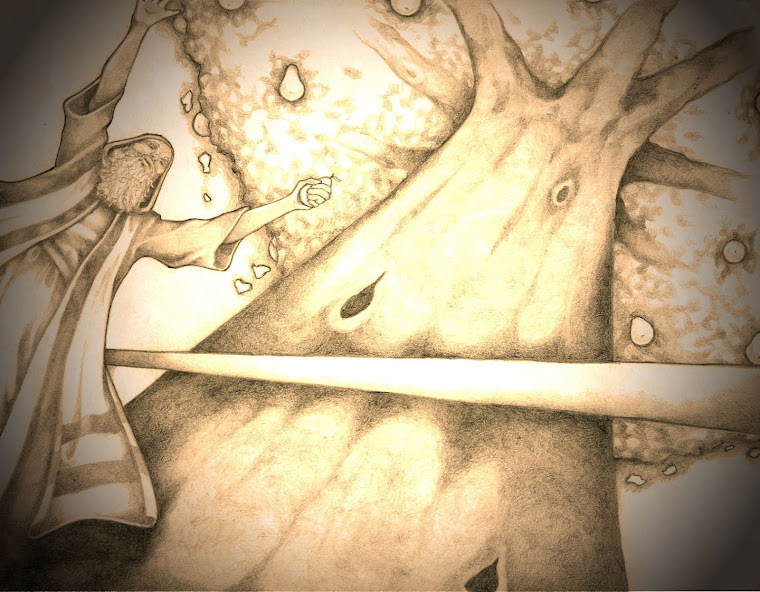 |
| Ammon at the waters of Sebus |
While reviewing one of my (and most 9 year old boys) favorite stories in the Book of Mormon, that of Ammon at the waters of Sebus cutting off the arms of the Lamanites who were gathered to scatter the flocks belonging to the king being watched by Ammon and some of the kings other servants, I couldn’t help but to ponder on the oddities of this story. Especially how it was common practice for Lamanites to scatter the kings’ flocks and then feel comfortable in the presence of the kings courtyard days later. We know this was common practice because the servants feared for their very lives because of their knowledge of what had happened to other servants of the past who had been sacrificed for allowing the exact same practice to transpire while on their clocks.
 |
| Percy Lomahquahu explaining the holes along the cliff edge of ancient Pivanhonkiapi |
history. His parallels varied in “standard Nibley fashion” from Homeric duels like David and Goliath to modern day tag team wrestling. I choose to focus my attention to those examples that specifically took place mainly in areas considered to be Book of Mormon lands. These examples would include the infamous Mayan games played on the ball courts leading to a sacrifice of either one key player or worse case scenario a whole team. Other ceremonial games of death included those that have since been removed from practice by the modern day Pueblo including the Hopi wa-wa ceremony spoken of by Frank Waters in his book called “Book of the Hopi” but due to lack of space I’ll use Dr. Nibley’s description:
“Equally horrendous was the Wa-Wa rite of the Hopis and some of the other pueblos. It is still celebrated in Quatemala at the spring equinox. There is a tall pole, and they swing [people] around it head down. When the Hopis did it, up until 1900, the pole protruded over the edge of the mesa and the drop was 300–400 feet. The pole was cut half-way through and was supposed to break. Human sacrifice was expected, and that satisfied the necessary killing for the year.”
To this day although the ceremony itself is no longer practiced by the Hopi there are still holes in the ground where the tall poles used to be inserted. As noted by Nibley in Guatemala there is a similar tradition which no longer involves death or sacrifice but is known as Palo Volador. In Claire Boobbyer’s “Guatemala handbook: the travel guide” she states,
 |
| The Palo Volador |
Nibley also noted that one way we as readers could tell that the game being played at Sebus was a ceremonial practice was because the Lamanites drew their clubs or as Nibley stated “their ceremonial clubs” rather than using swords except for the leader who upon seeing enough damage decided to draw his sword and was actually killed by Ammon. In any event it seems highly unlikely that Joseph Smith Jr. would have known of the use of these “Games of Chivalry” used to gain some sort of status through pillage or sacrifice, especially since sacrifice among the Maya was completely unheard of until the past 50 years when archeologists and come to the conclusion that sacrifice and war were both very integral parts of Mesoamerican society. So once again we see that the Book of Mormon stands the test of time and is actually a record of the ancient inhabitants of these American lands and not a mere fictional book made from the figments of Joseph’s imagination.

Intense stuff! Funny how so much of it goes back to Christ's sacrifice or prior revelations of it.
ReplyDeleteI completely agree. Its amazing the ancient prophecies of his coming and his sacrifice would extend so much influence.
ReplyDelete